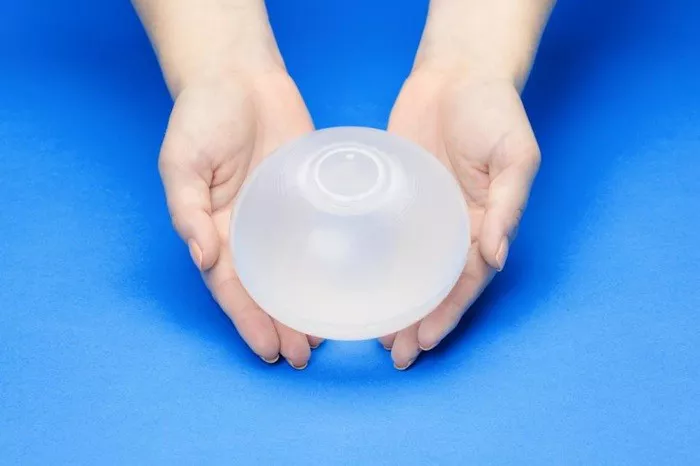Autologous fat breast enlargement, also known as fat grafting or fat transfer, is a popular procedure for women seeking a natural and subtle enhancement to their breasts. This technique involves harvesting fat from one part of the patient’s body, typically the abdomen, thighs, or flanks, and injecting it into the breasts. While this procedure offers numerous benefits, including a more natural look and feel compared to implants, it is not without potential side effects. In this article, we will explore five significant side effects associated with autologous fat breast enlargement.
Introduction to Autologous Fat Breast Enlargement
Autologous fat transfer is a versatile procedure used not only in breast augmentation but also in reconstructive surgeries and body contouring. The procedure involves liposuction to remove fat from donor sites, processing the fat to purify it, and then injecting it into the target area, such as the breasts. This method has gained popularity due to its dual benefit of reducing fat in unwanted areas and enhancing breast volume naturally. However, understanding the potential side effects is crucial for anyone considering this procedure.
1. Fat Necrosis
What is Fat Necrosis?
Fat necrosis is a condition where the transferred fat cells die and form firm lumps in the breast tissue. This occurs when the fat cells do not receive sufficient blood supply after being transferred. The lack of oxygen and nutrients causes the cells to die, leading to the formation of lumps.
Symptoms of Fat Necrosis
Patients with fat necrosis may experience:
Palpable lumps or nodules in the breast
Pain or tenderness around the affected area
Skin changes over the lumps, such as redness or dimpling
Hard or calcified areas detectable on mammograms
Management and Treatment
Fat necrosis can be managed through:
Monitoring: Small, asymptomatic lumps may not require intervention and can be monitored for changes.
Needle Aspiration: For larger or symptomatic lumps, needle aspiration can be used to remove the necrotic fat.
Surgical Removal: In some cases, surgical excision of the affected tissue may be necessary.
See Also: 5 Breast Augmentation Procedures Without Implants
2. Infection
Causes of Infection
Infections are a risk with any surgical procedure, including autologous fat transfer. They can occur at the liposuction site, the injection site, or both. The risk is heightened by factors such as poor hygiene, inadequate sterilization, or pre-existing medical conditions that impair healing.
Symptoms of Infection
Infection signs include:
Redness and swelling around the incision or injection sites
Increased pain or tenderness
Fever or chills
Pus or discharge from the wound
Prevention and Treatment
Preventing infections involves:
Strict adherence to sterile techniques during surgery
Proper wound care post-operation
Antibiotic prophylaxis as prescribed
If an infection occurs, it can be treated with:
Antibiotics: Oral or intravenous antibiotics to combat bacterial infection
Drainage: If abscesses form, surgical drainage may be required
Hospitalization: Severe infections may necessitate hospital care
3. Fat Resorption
What is Fat Resorption?
Fat resorption is the process where some of the transferred fat cells do not survive and are gradually absorbed by the body. This is a common occurrence and can impact the final volume and shape of the breasts.
Factors Influencing Fat Resorption
Several factors can affect the extent of fat resorption:
Technique: The method of fat harvesting, processing, and injection can influence survival rates.
Patient Factors: Individual differences in metabolism and healing can affect fat retention.
Post-Operative Care: Proper care and avoiding pressure on the breasts can help improve fat survival.
Managing Fat Resorption
Managing fat resorption may involve:
Overfilling: Surgeons often inject more fat than desired to account for anticipated resorption.
Multiple Sessions: Some patients may require additional fat grafting sessions to achieve the desired result.
Patience: Final results can take several months to become apparent as the body adapts to the new fat.
4. Asymmetry
Causes of Asymmetry
Achieving perfect symmetry in breast augmentation can be challenging. Factors contributing to asymmetry include:
Uneven Fat Distribution: Variations in how fat is injected and how it settles can lead to asymmetry.
Fat Resorption: Differential resorption rates can result in one breast appearing larger or differently shaped than the other.
Pre-Existing Asymmetry: Patients with naturally asymmetrical breasts may find the asymmetry persists post-procedure.
Assessing Asymmetry
Patients and surgeons can assess asymmetry by:
Visual Inspection: Comparing the breasts in front of a mirror.
Palpation: Feeling for differences in firmness or size.
Imaging: Using mammograms or MRI to assess internal differences.
Correcting Asymmetry
Asymmetry can be corrected through:
Additional Fat Grafting: Injecting more fat into the smaller or differently shaped breast.
Surgical Revision: In some cases, surgical adjustment may be necessary.
Patience and Observation: Minor asymmetries may settle over time as the body heals and adjusts.
5. Cyst Formation
What are Cysts?
Cysts are fluid-filled sacs that can develop in the breast tissue. They can occur as a response to the injected fat and are usually benign. However, they can cause discomfort and may complicate breast examinations and imaging.
Symptoms of Cysts
Symptoms of cysts include:
Lumps: Soft, movable lumps in the breast.
Pain: Tenderness or discomfort around the cyst.
Changes in Breast Shape: Larger cysts may alter the contour of the breast.
Diagnosing and Treating Cysts
Cysts can be diagnosed through:
Ultrasound: Imaging to distinguish cysts from solid lumps.
Fine-Needle Aspiration: Extracting fluid from the cyst for analysis.
Treatment options include:
Aspiration: Removing the fluid with a needle to relieve symptoms.
Monitoring: Small, asymptomatic cysts may be monitored for changes. Surgical Removal: Persistent or problematic cysts may require excision.
Conclusion
Autologous fat breast enlargement offers a natural and appealing option for breast augmentation. However, it is essential for patients to be aware of the potential side effects. Fat necrosis, infection, fat resorption, asymmetry, and cyst formation are among the most significant risks associated with this procedure. Thorough consultation with a qualified plastic surgeon, careful consideration of the benefits and risks, and adherence to post-operative care instructions can help mitigate these side effects and achieve the desired outcome.
Related topics:

